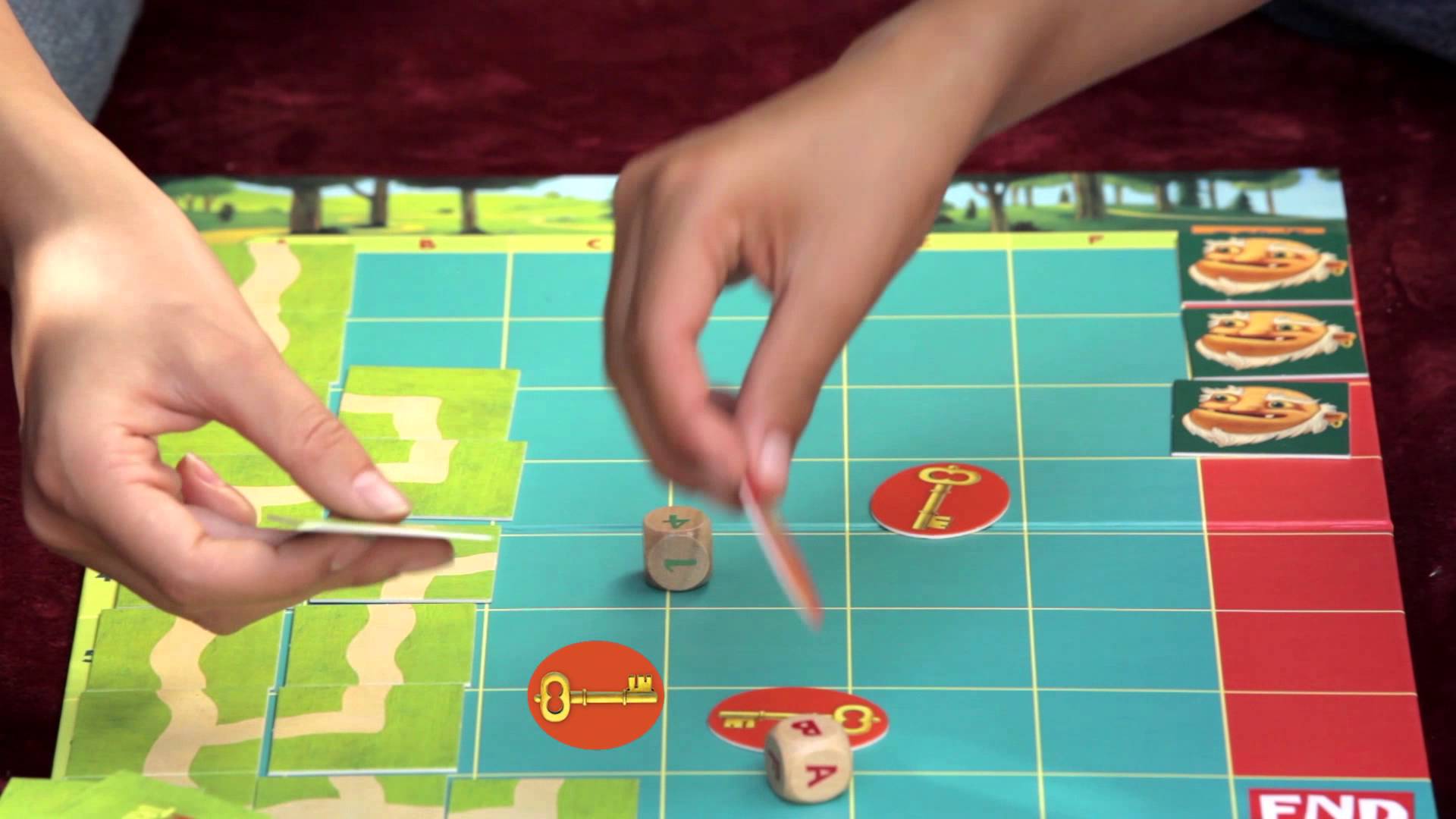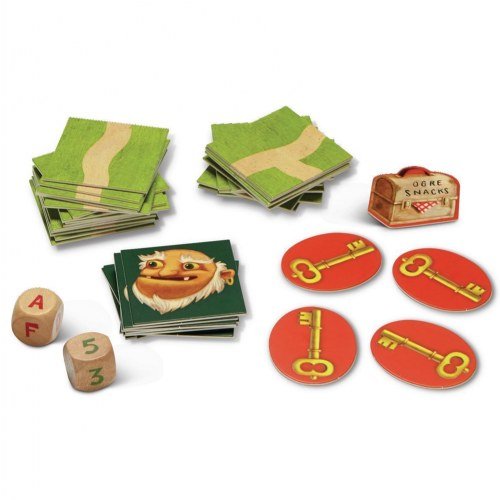Race to the Treasure
Players: 2 or more (cooperative game)
Ages: 2 and up
Purchase: Buy on Amazon (affiliate link)
Math Ideas: Orientation, pattern, counting
Questions to Ask:
Where can you place that tile? Which ways can the tile fit in that space?
How many Ogre tiles have we drawn? How many left until we lose?
The first five years of your child's life are the most developmentally important years, and the foundation they build through play and exploration will form the basis of their learning for years and years to come.
That's why I am a big proponent of the Tammany Hall approach to the first five years: Math Early and Math Often.
So when I found Race to the Treasure, I knew I had to share it with my kids, and with you! If you're looking for your child's first board game, you could hardly do better.
How to Play
Race to the Treasure is perfect for your youngest children because it is a cooperative game. Unlike most games, where each player is trying to outscore, defeat, or bankrupt his opponents, cooperative games allow players to work together to try to beat a common opponent, the game itself.
In the game, each person takes turns drawing tiles that contain paths. You work together to build a path from the top corner of the board all the way down to the treasure, picking up three keys along the way so you can unlock the treasure chest. Every so often, you draw an Ogre tile, which brings the Ogre one step closer to reaching the treasure himself. Collect the keys and beat the Ogre to the treasure and you win!
The game is great for toddlers and preschoolers because its simple physical pattern (draw a tile, place it on the board) teaches your child the basic mechanics of how games work. Even if your two-year-old can't place the tiles correctly, they are still learning about pattern and structure. Don't worry, their precision and attention spans will grow with time.
Where's the Math?
There are actually two phases of Race to the Treasure, each of which contains valuable mathematics.
First is the setup phase. Remember the keys? They are placed randomly across the board at the start of the game. To do this, your child rolls two dice, one which has the numbers 1-6, and one which has the letters A-F. She uses those dice to make coordinates as in Battleship, such as B2, A6, and so on, and then places the keys on the grid.
Using a coordinate system is a pretty sophisticated skill, by the way. You have to find each coordinate separately, then move in two directions along the grid simultaneously to find where they intersect. Tough stuff for a preschooler! But trust me, your kid's middle school math teacher will thank you.
During the actual game, kids have to pay careful attention to the orientation of their tiles. Orientation simply means the position of an object on paper. If you rotate a tile clockwise, you are changing its orientation.
Orientation is complicated! Have you noticed that an upside-down triangle is still a triangle, while an upside-down M is a completely different letter? Seems obvious to us, but it is not obvious to a young child. My own kids will point out a square, but if I tilt the shape, they'll say that it "turns into a diamond." As your children learn more and more about geometry, they'll need to be able to notice how orientation changes some aspects of a shape while leaving others intact.
All that to say, orientation matters. In this game, only some orientations of the tiles will extend the path. Your child may have to experiment with multiple orientations until she finds one that works.
Questions to Ask
Race to the Treasure is a cooperative game, so it is designed to encourage the players to talk and ask questions.
Whenever your child draws a path tile, you can ask two questions: Where should we place the tile, and how should we turn it?
You will have a temptation to show your child the correct way to place the tile. Believe me, I share that urge! But you want to be as minimally helpful as possible. If you grab each tile and place it along the path, pretty soon you realize that you're basically playing a solitaire version of a game meant for four-year-olds.
When you draw an Ogre tile, make that a big deal! As you place it on one of the eight Ogre spaces, groan that the Ogre is one step closer to winning! By the way, how many more Ogre tiles have we drawn, and how many Ogre tiles until we lose? By asking these questions consistently, you get your kids counting up and counting down at the same time, which helps them understand the pairs of numbers that add to eight.
Buy Race to the Treasure on Amazon (affiliate link)






